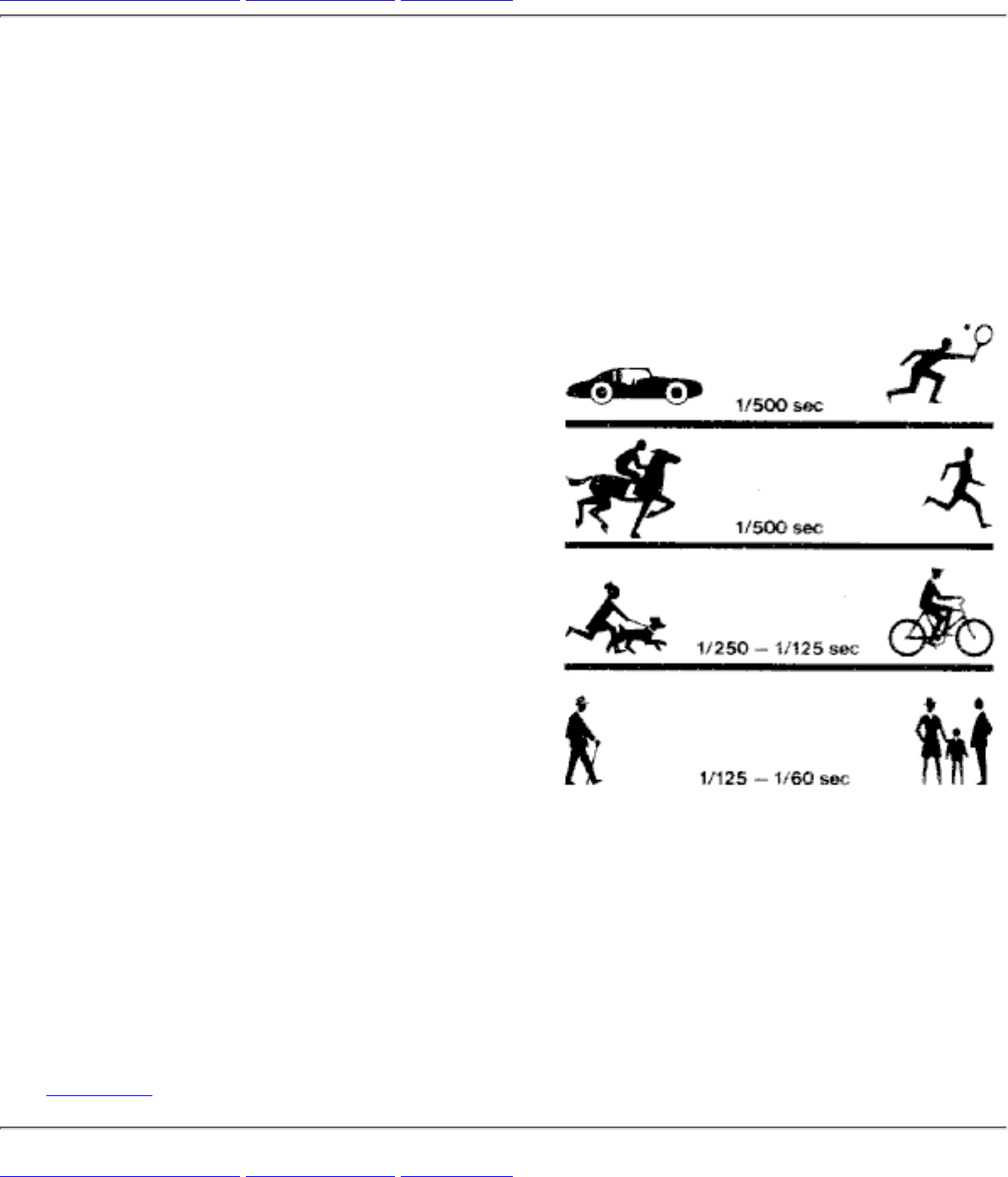
Practical Hints
[Return to Manual index] [Previous page] [Next page]
6. Selecting the best shutter speed
The figures 2 to 500 on the shutter speed dial 1 indicate fractions of a second. The speed dial engages at
each setting; never set intermediate values. Image sharpness depends, among other things, on the use of a
sufficiently fast shutter speed. Therefore :
With hand-held exposures: Use fast speeds to avoid camera shake. The longest usable time is 1/30
second; 1/60 and 1/125 second are safer and more reliable. With a not very steady hand use 1/125 or,
better still, 1/250 second .
With moving subjects: Use short exposure times to avoid movement blur. As a general guide:
Motor races, tennis - 1/500 second.●
Horse races, cross country runners -
1/500 second.
●
Running children and cyclists -1/250 to
1/125 second.
●
Walking figures, standing people-1/125
to 1/60 second.
●
In general: Movement at close range and across the
viewing direction needs faster shutter speeds, movement
from greater distances and approaching or receding from
the camera allows slower shutter speeds.
Longtime exposures
The "B" setting on the shutter speed dial provides time exposures of any required length. Keep the release
button depressed for the required exposure time. The shutter closes when you let go again.
With longtime exposures you can also take shots in very poor light which is too weak for an exposure
meter reading. As a special case, if you arrive at the "B" setting by lining up the matching pointer 17, the
correct exposure time is 1 second (double the next exposure setting).
For long time exposures: place the camera on a firm support or a tripod and use a cable release with time
lock (see hint 3).
[Return to Manual index] [Previous page] [Next page]
All this informations, texts, and Images were extracted from the "Rollei 35/35T/35S In Practical Use" and
only intends to give some orientation to new users that didn't had access to the original manual. (c)
Rollei-Werke Franke & Weidecke


















